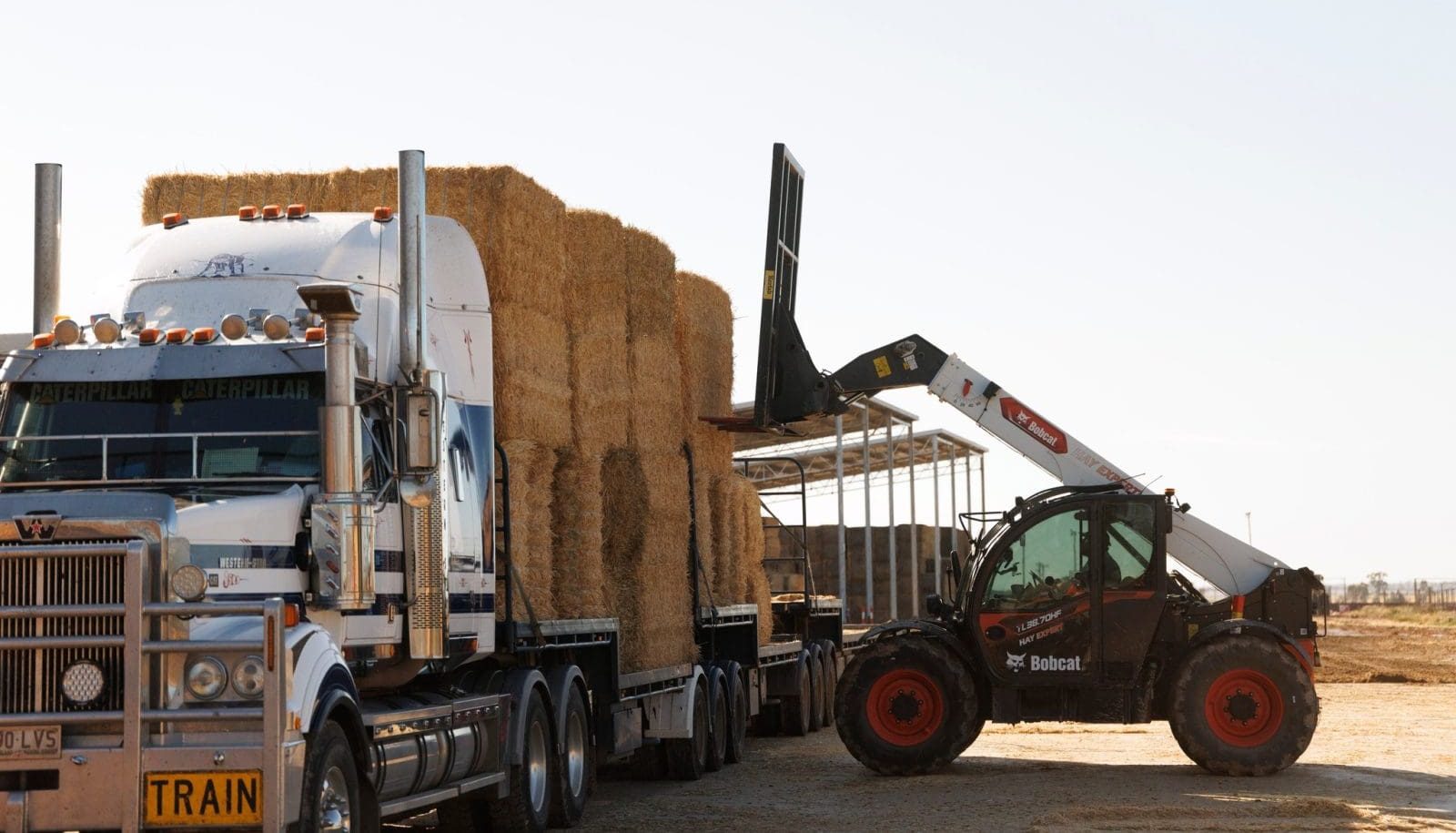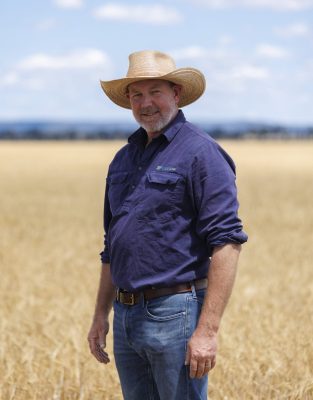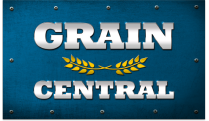
Fodderlink has been keeping up hay and straw supplies to its regular customers, including feedlots in southern Qld and dairies in Vic and SA, as well as delivering to mostly wholesale customers in drought-affected parts of south-eastern Australia in recent months. Photo: Fodderlink
THERE’S nothing like a drought in Victoria and South Australia to ram home the importance of hay in the livestock economy.
Its value has more than doubled since early May, when graziers realised 2025 would be one without an early break, and they had to ready themselves for four months without green pick for their sheep and cattle.
Add to that a surge in demand for hay after western Queensland’s floods in April, and another in response to last month’s flood on the New South Wales Mid North Coast, and Australia’s hay supply chain has flipped on its normal south-to-north axis.
While the past week has brought most drought-stricken districts 20-50mm, the drought is far from over, and will not be until feed regenerates, dams fill, and fodder reserves are replenished.
Differing state government freight and fodder subsidies will no doubt come under the spotlight as a result of this drought, and Nicon Rural Services director Cam Nicholson said he can see producers rethinking their strategy for fodder procurement after a record period of handfeeding, even in south-eastern Australia’s classified high-rainfall zones.
New experience
Cautious optimism about an end to the drought is building in key grazing and mixed-farming areas of Vic and SA, many of which have had their driest 15 months on record or in living memory.
“Everyone is still relying on a good spring, that’s when you grow the bulk of your feed,” the Geelong-based Mr Nicholson said.
Many livestock producers got through last year with fodder on hand, but have had to buy in additional hay in a hot market in recent months to maintain their breeder numbers and turn off progeny.
It seems the experience of scrabbling for hay will not be forgotten in a hurry, particularly by producers who believed they were operating in a drought-proof area.
“This experience will change people; they’ll improve their relationships with hay suppliers, and those relationships will mature.”
Mr Nicholson said he hoped graziers would consider regularly buying small amounts of hay from a supplier to build a relationship, and also to help underpin the cash flow of those selling hay into the domestic market.
He said this would be a wise replacement to the widely-held risk-management strategy of saying “there’s always someone that’s got hay on hand close by”.
Even as prospects brighten for paddock feed, haycutting, and a grain harvest in spring and summer, Mr Nicholson said the mad scramble for fodder that started in south-west Vic early last month could be avoided in subsequent events by a more regimented approach to procurement.
“In south-west Vic last year, we got a bit of winter rain, and a little in August-September, and then it shut down.”
The region typically grows most of its feed in October-November, and Mr Nicholson said the deficit came to light when autumn failed to produce the expected break in April.
“Everyone that was willing to sell got past Anzac Day and thought: ‘If the break is going to be this late, I’ll hang on to my hay’.”
Ahead of lambing or calving, Mr Nicholson said producers with hay on hand stopped selling to avoid having to buy back in during winter if the break didn’t come.
“One bloke said to me: ‘I’d rather be looking at it than looking for it’.”
Different story for grain
While prices for hay and other roughage like almond hulls and corn straw at least doubled over May, barley as the drought-feeding grain of choice rose only 10 percent between early February and its peak in late May.
The difference reflects ample stocks of barley being released in SA, Vic and southern New South Wales by traders and growers, while the skyrocketing of hay prices shows the lack of availability of local stock.
“Hay dried up in Vic in about a two-week period.”
Charities have done a fine job of getting hay, often from interstate, to as many producers in need as possible, but many have had to call on contacts, or contacts of contacts, to chase down loads.
“Towards the end, you could see the stress of farmers competing against other farmers.”
Partly because Vic is Australia’s major dairying state, it producers around 45pc of Australia’s fodder, and despite a late injection of supply from frosted 2024-25 cereal and canola crops in SA and Vic, local hay got hoovered up in the first quarter.
“When Vic dried up, things became difficult.
“Supply from what was considered a reliable place…evaporated very quickly, and then you got floods up north.”
From the supplier
South-east Qld’s Fodderlink is a leading supplier of hay and straw to feedlots which in total currently have at least one third of national total of cattle on feed.
The business is also a major supplier to dairies in SA and Vic.

Cameron Angel.
Fodderlink founder and managing director Cameron Angel said the business has been dealing with a supply chain flipped by drought in the south, and by the north’s big year for fodder production, as well as flood-related demand.
“It’s changed in the past 18 months, but especially in the past six months,” Mr Angel said.
“We’d normally buy from SA, Vic and southern NSW and bring it north.
“We haven’t been bringing it up from SA and Vic, and the drawing arc to come into southern feedlots is now reaching into central and northern NSW.”
Mr Angel said SA’s tough season last year has the market missing both its volume and quality, and the hunt for compensatory volume has emptied out available supply from the Lachlan Valley south.
Southern wholesalers, dairy farmers and graziers are now sourcing product through Fodderlink and others out of north-central and northern NSW, and even into Qld, where plenty of rain has made plenty of hay.
Mr Angel said Vic and SA consumers can normally source high-quality cereal hay for around $260/t.
However, limited intrastate supply, and one-way freight of up to 1000km and more in places, has well and truly doubled the landed price.
“It’s more like $550-$600 now.”
Eight days out from the winter solstice, pastures and fodder crops will take some weeks to bulk up enough to be grazed, and Mr Angel said when they do, surplus hay will be offered up out of local storages.
“As each area gets more rain, they will release their reserves into the market.
“We never run out of hay.”
However, supply of every form of roughage and high-protein feed remains very tight in SA and Vic, and Fodderlink has as a result expanded its product offering to southern customers.
“I implore people to look at cottonseed.”
Baled stubble has also been trading lately.
“We have done corn stubble, especially in the south.”
Grain Central: Get our free news straight to your inbox – Click here

HAVE YOUR SAY